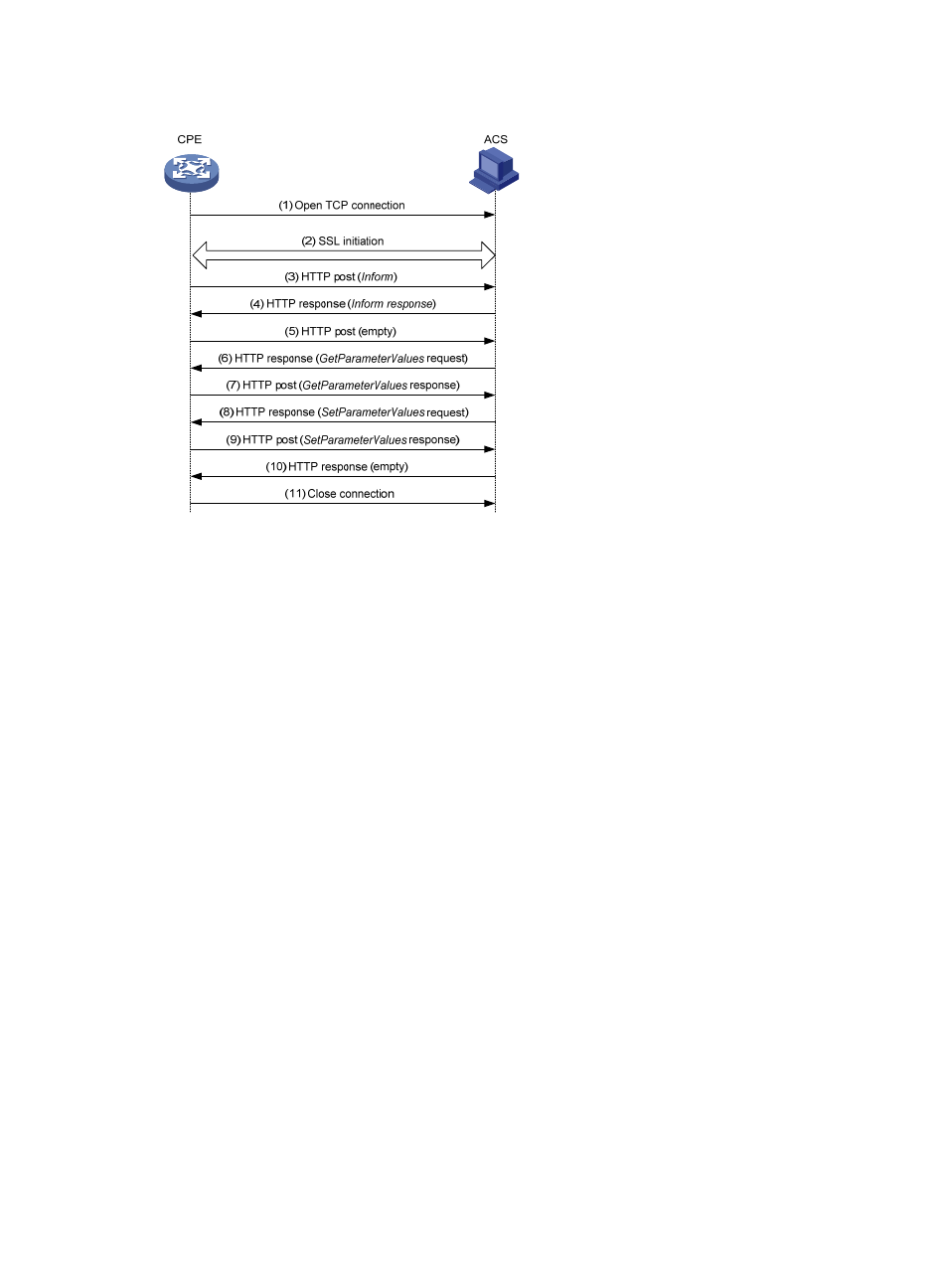Cwmp configuration approaches – H3C Technologies H3C MSR 50 User Manual
Page 92

Figure 29 Example of the CWMP message interaction
The following steps show how CWMP works:
1.
Establish a TCP connection.
2.
Initialize SSL and establish a security connection.
3.
The CPE sends an Inform request message to initiate a CWMP connection. The Inform message
carries the reason for sending this message in the Eventcode field. In this example, the reason is "6
CONNECTION REQUEST," indicating that the ACS requires the CPE to establish a connection.
4.
If the CPE passes the authentication of the ACS, the ACS returns an Inform response, and the
connection is established.
5.
Upon receiving the Inform response, the CPE sends an empty message, if it has no other requests.
The CPE does this in order to comply with the request/reply interaction model of HTTP/HTTPS, in
which CWMP messages are conveyed.
6.
The ACS queries the value of the ACS URL set on the CPE.
7.
The CPE replies to the ACS with the obtained value of the ACS URL.
8.
The ACS finds that its local URL value is the same as the value of the ACS URL on the CPE. Therefore,
the ACS sends a Set request to the CPE to modify the ACS URL value of the CPE to the URL of the
backup ACS.
9.
The setting succeeds and the CPE sends a response.
10.
The ACS sends an empty message to notify the CPE that it has no other requests.
11.
The CPE closes the connection.
After this, the CPE initiates a connection to the backup ACS.
CWMP configuration approaches
To use CWMP, you must enable CWMP at the CLI. After that, you can configure ACS and CPE attributes
at the CLI. Alternatively, the CPE may obtain some ACS and CPE attributes from the DHCP server, or the
79